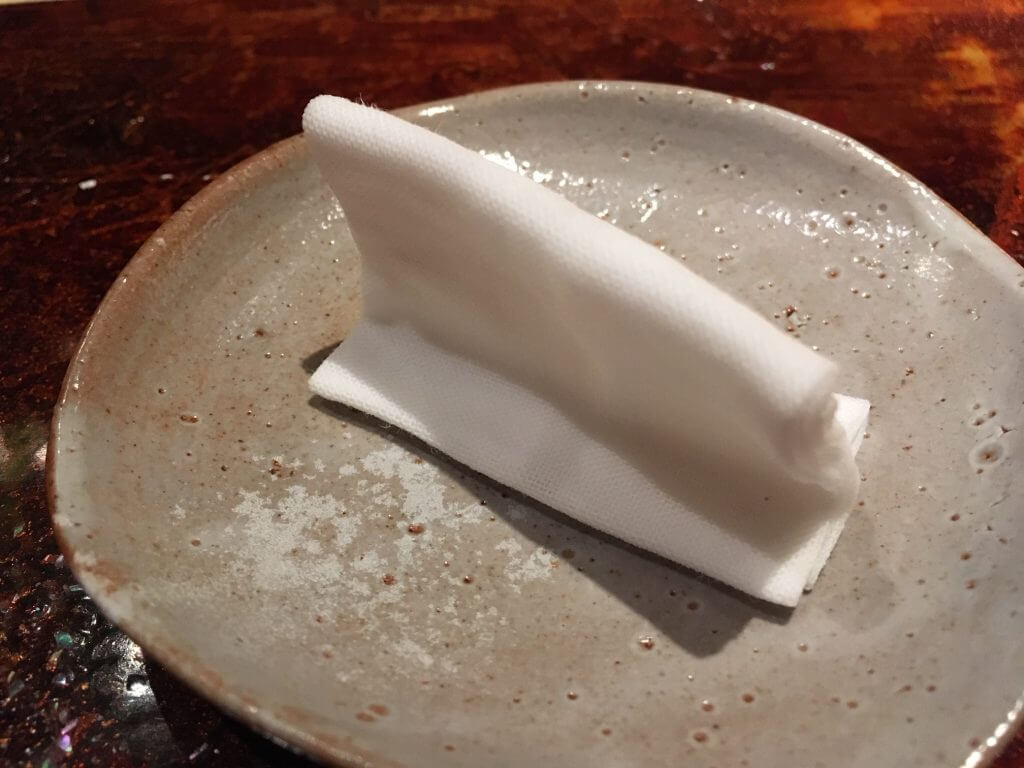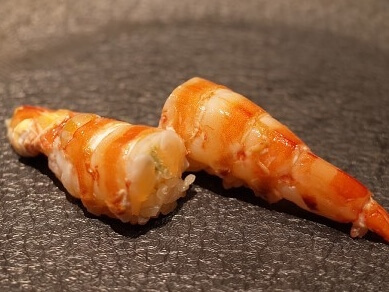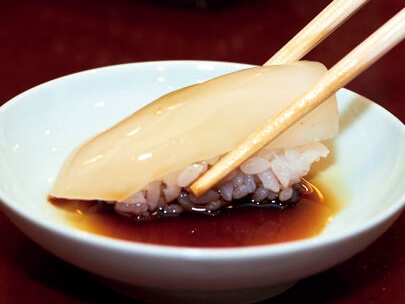Sushi shops started as food stands where people ate standing up, but they’ve evolved with the times and are now luxurious venues. Now they serve alcohol and have become a ‘dining space’ where you will want to stay for a few hours. And after all, it’s a place to eat and drink so you should eat and drink things that you enjoy. There are no rules about what to eat. Just make sure you don’t make this space uncomfortable for others.
The following is a detailed introduction of the experience from the time you make your reservation until you walk out of the restaurant.
● Making a reservation. To make a reservation by phone, it’s best to call between 5:00 pm and 5:30 pm.
● If this is your first time visiting the restaurant and you’re worried about the total cost, you can tell them your budget. Also, let them know any information such as preferences or allergies.
● There are 3 types of ordering: Omakase (Chef’s Choice), Okonomi (Customer’s Choice), or Okimari (Set Menu). If you don’t have any preferences, and you are happy to have a professional choose the most delicious toppings from that day’s catch, then ask for Omakase. There are two types of Omakase, either a combination of tsumami and nigiri, or an assortment of nigiri only (this may not be on offer depending on the restaurant). If you are still hungry after you’ve eaten all that’s been prepared, you can order more.
If you are someone who knows what they want to eat and likes things a certain way, you can choose “Okonomi” to select your own toppings. You should let the restaurant know your budget when you make a reservation so you can enjoy it without worrying about the bill.
“Okimari” will typically have three grades: Normal, Premium, and Deluxe. If you are hungry, you can add more of what you like. However, be aware that in restaurants that require reservations, they may not even offer “Okonomi” or “Okimari”.
● Don’t be late for a reservation.
● Stay in your allocated seat at the counter. Long-established restaurants may have their own rules such as the regular customers will need to sit in front of the sushi chef. In these types of places, if you want to enjoy sake and conversation then you should sit at a table.
● Drunken yelling and fighting with other customers are obviously prohibited.
● Do not wear too much perfume. One of the attractions, when you eat sushi, is the fragrance of the fish, so don’t mask that with heavy scents.
● You are welcome to eat with decorative nail art, but in that case, it is preferable to use chopsticks.
● The most troublesome thing you can ask is: What is today’s recommendation? Everything they serve will be their recommendation. If you want, you can ask what fish is in season. Or perhaps mention that you like shellfish and ask the chef to choose for you. Then, leave it up to the professional.
● Terms like “Agari,” “Murasaki,” and “Oaiso,” are words for employees working at the sushi restaurant and should never be used by customers. Tea, please. Soy sauce, please. Check, please. Just speak in the typical way any customer would.
● Do not take photos without permission. At some high-end restaurants, you are not even allowed to take pictures of the sushi.
● There is, of course, no smoking. The reason being the exact same as for perfume.
● There is no dress code but you are expected to wear clothing suitable for the surroundings.
● Do not make or take phone calls. If you have an urgent call, you should step outside the restaurant.
● The counter scratches easily so please do not place your phone, watch or other items on it. A cypress counter can cost several hundreds of thousands of dollars. What you should do is remove your watch and place your smartphone on top of a handkerchief. And if you do accidentally spill some soy sauce, don’t clean it up yourself, but call over a staff member to wipe it up.
● It is perfectly acceptable etiquette to request sushi without wasabi or with a reduced amount of wasabi.
● The ginger is there to refresh your palette after eating a fatty topping. If you eat too much of it, it will affect the flavor of the sushi.
●Aojiso (green perilla), used a lot as tsuma (garnish), leaves its strong flavor in your mouth once you eat. This makes you lose the sense of the flavor of sushi, and therefore it is better to avoid it unless it is already prepared inside nigiri sushi or sushi rolls.
● The best thing to clean away the taste of fish fat and the smell is to drink hot tea. The tea that they’ll bring when you visit is lukewarm to make it easy to drink.
● Of course, you can eat the sashimi tsuma (daikon radish), but it is not expected and you can leave it if you want. The term “tsuma” itself doesn’t mean shredded radish, but it is a generic term for the food items served under and alongside sashimi. The green shiso leaves and wakame seaweed served with sashimi are also known as tsuma.
● Do not occupy too much of the owner’s time with talking.
● Do not keep ordering the same thing. In restaurants only offering you “Omakase,” there may not be a large stock of certain toppings. However, if it’s “Okonomi” and you’re prepared to pay the bill, there are no such social restrictions on what you order.
● Sushi should be eaten immediately after being prepared and served. Ideally, it should be eaten within 10 seconds.
● It may be eaten with either your hands or your chopsticks. Restaurants  that prefer you to eat with your hands will provide an extra, smaller towel for cleaning your hands between sushi, along with the normal hand towel. Even then, feel free to use chopsticks if you prefer.
that prefer you to eat with your hands will provide an extra, smaller towel for cleaning your hands between sushi, along with the normal hand towel. Even then, feel free to use chopsticks if you prefer.
● You should eat the sushi in one bite to fully enjoy the balance between the  fish and the sushi rice. For that reason, you shouldn’t peel the fish off the shari (vinegared rice). If something is difficult to eat in a single bite, like Kuruma prawns, you can have it cut into a smaller size. And also it is perfectly acceptable to order more or less Shari.
fish and the sushi rice. For that reason, you shouldn’t peel the fish off the shari (vinegared rice). If something is difficult to eat in a single bite, like Kuruma prawns, you can have it cut into a smaller size. And also it is perfectly acceptable to order more or less Shari.
● For the shrimp tails, you need to dispose of, you should place them on the side of the plate (which had the sushi) rather than putting them in the soy sauce dish.
● Wild fish and shellfish have larger, fatty bodies, during certain seasons when they are at their most delicious. Take this opportunity to eat fish which are in season.
● Make sure to only use a small amount of soy sauce on the topping only.  Sushi rice (shari) absorbs soy sauce very quickly, so dipping the rice side of the sushi will make the piece fall apart. Also, do not use too much soy sauce so as not to inhibit the delicate tastes of the fish.
Sushi rice (shari) absorbs soy sauce very quickly, so dipping the rice side of the sushi will make the piece fall apart. Also, do not use too much soy sauce so as not to inhibit the delicate tastes of the fish.
● Laying the chopsticks sideways as if scooping up the sushi distributes the strength and the sushi won’t break easily. If you grab it in the middle then there will be too much force on that part and it will break in two pieces. Make sure to eat this beautifully formed piece of sushi in one bite.
● Some sushi toppings, such as kuruma ebi (kuruma prawn) and anago (Japanese conger), are boiled or grilled after the order is placed. In that case, it is best to order in advance. Otherwise, you may have to wait about 10 minutes.
● What would you do when soy sauce from sashimi or juice from the food was about to drip? With Japanese table manners, it is ok to pick up a plate and eat while holding it, as long as it is small and holdable in one hand such as a saucer for soy sauce. It also creates a beautiful posture to look at when eating with a plate in your hand, compared to bending your body and slouching forward to reach a small plate. I often see people eating with one hand close to their mouth in case of dripping soy sauce or such, and many of them mistakenly consider this as a polite manner, but it is actually one of the taboos in Japanese table manners.
● In Edomae-style sushi, the sushi is not dipped in soy sauce. Some sushi is presented after being flavored with “Nikiri”, salt (used for squid, conger eel, octopus, etc.), or with Nitsume (used for conger eel, clams, octopus, squilla, abalone, etc.). The sushi chef makes each piece of sushi with consideration for the balance of shari, sushi toppings, wasabi and nikiri. Please try the sushi without adding any flavors or dipping.
● There is no specific order to eat the dishes in. Eat-in the order you like. However, because their sweet tastes will affect your palette, it is better to leave Anago and Tamagoyaki to the end.
● When asked “could we serve you a soup bowl now?” at a high-class sushi restaurant, it sometimes is a sign that omakase course is about to end. If there are any additional sushi toppings you would like to eat, this is the right time to order. And occasions like having a client dinner, implies that your meal has reached the budget you informed in advance.
●What should I do if I get full during an Omakase course?
Before you’re completely full, speak to the sushi chef, such as asking, “how many more pieces?” or “I think I can eat about three more.” The chef will adjust the toppings he/she uses. It is not rude.
●What should I do if I want to make sure I can eat a lot of a certain topping?
Tell the restaurant when you make the reservation.
● Once you have finished, you should give up your place quickly. There is no reason to linger. As a rule of thumb, it should take about an hour if you are just eating sushi. If also drinking and eating snacks, this can be 2 hours.
● In Japan, when paying the bill in the sushi restaurant, the price is written on a small piece of paper, like a sticky note. There is no detailed breakdown.
● Some restaurants will be cash only so you should confirm when making your reservation.
● When leaving the restaurant, you should just offer some simple words of gratitude like “that was delicious”.
Summary
We’ve discussed a lot of scenarios. But with this knowledge, you don’t have to worry when you visit a sushi restaurant and you can just focus on enjoying the delicious food. We hope these will be useful.
Related Content:
Is sushi eaten with your hands? Or should you use chopsticks?
Is there a certain order for eating sushi?
Why is it important to avoid wearing too much perfume?
Share this article